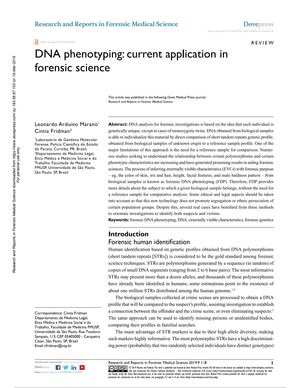DNA Phenotyping: Current Application in Forensic Science
February 2019
in “
Research and reports in forensic medical science
”

TLDR DNA phenotyping helps predict physical traits from DNA with varying accuracy and requires careful ethical and legal handling.
The document from 2019 reviews the use of forensic DNA phenotyping (FDP) in predicting externally visible characteristics (EVCs) such as eye, hair, and skin color, facial features, height, and male pattern baldness from DNA samples, without the need for a reference sample. It discusses the development of tools like IrisPlex, HIrisPlex, and HIrisPlex-S, which predict physical traits with varying degrees of accuracy, and the strong hereditary factor in male pattern baldness, with genetic markers achieving up to 86.4% accuracy in prediction. Age estimation using DNA methylation analysis is noted to be accurate within a deviation of 3.15 years. The document also addresses the challenges in predicting height and facial features due to the complex interplay of genetic and environmental factors, and the limitations in accuracy. It emphasizes the importance of ethical and legal considerations to prevent misuse and protect privacy, and acknowledges the need for further research to confirm findings across diverse populations and to address ethical and legal concerns. Real cases and initiatives like the VISAGE Consortium and the European DNA Profiling Group are mentioned for their role in advancing the application of DNA phenotyping in forensics.


